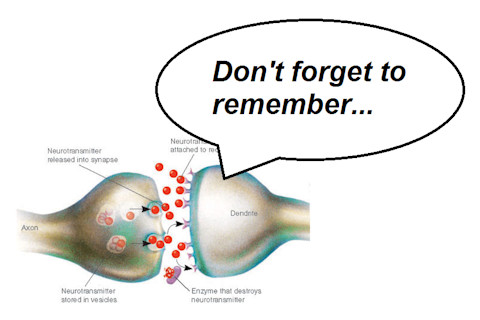Most neuroscientists will tell you that long-term memories are stored in the brain in the form of synapses, the connections between neurons. On this view, memory formation occurs when synaptic connections are strengthened, or entirely new synapses are formed.

synapse
However, in a new piece in Frontiers in Systems Neuroscience, Austrian researcher Patrick C. Trettenbrein critiques the synapse-memory theory: The Demise of the Synapse As the Locus of Memory.
Trettenbrein acknowledges that “the idea that learning is essentially the modification of synapses in an ever-changing plastic brain has become one of the dogmas of modern neuroscience”. However, he notes that some within the field of cognitive science have long been skeptical of this idea, or at least of its cousin, associationism.
He goes on to discuss theoretical problems with the synapse-memory theory. For instance, Trettenbrein says that “the brain must adhere to the abstract architectural properties of a universal Turing machine“. A defining feature of a Turing machine is its ability to read and write a long-term memory bank. Trettenbrein argues, following a book by Gallistel & King that given that memory is so fundamental to a Turing machine, memory ought to be a function of individual neurons, not of the connections between them.
I haven’t read the Gallistel and King book, but to me this argument seems overly abstract and not very convincing. I’m not sure what it would mean for a single cell to store information.
Trettenbrein next discusses a number of pieces of experimental evidence against the synapse-memory theory. For example, he cites a 2014 paper that reported non-synaptic long-term storage of information in neurons from the sea-slug Aplysia. However, as I said at the time in my blog post about this paper, it’s not clear how this mechanism would work in the case of the much more complex human brain.
Overall, this is an interesting and thought-provoking paper. However, as Trettenbrein acknowledges, it’s hard to see how we could even begin to explain memory if we reject the role of synapses:
To sum up, it can be said that when it comes to answering the question of how information is carried forward in time in the brain we remain largely clueless… the case against synaptic plasticity is convincing, but it should be emphasized that we are currently also still lacking a coherent alternative.
Trettenbrein, P. (2016). The Demise of the Synapse As the Locus of Memory: A Looming Paradigm Shift? Frontiers in Systems Neuroscience, 10 DOI: 10.3389/fnsys.2016.00088













